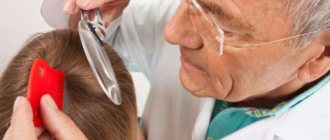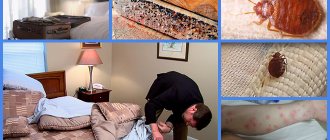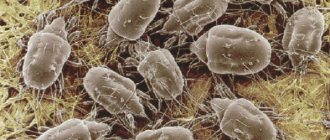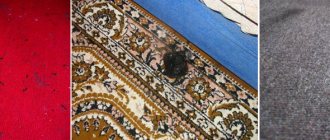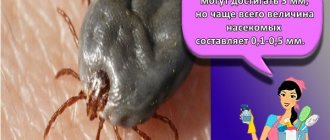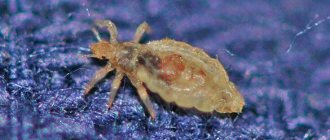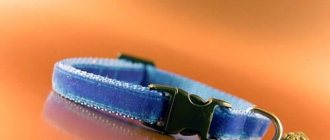Quite often, bed bugs appear in a person’s home. Their peculiarity is that they feed on human blood. For humans, the bite itself is dangerous, since the tick, when piercing the human skin, releases a special substance that can lead to various consequences. This is especially true when the human body is predisposed to allergies.
First of all, you need to find out how and why bed mites appeared in the house. After this, you should consider tactics to combat this parasite. It is important to have information about how to treat bite sites in order to alleviate the condition of the victim.
Why do bed mites appear in the house?
These parasites do not like sunlight and prefer to live in dark places in the home where there is no flow of fresh air. As a rule, they live not far from the places where people constantly rest. These are places such as the head of the bed, mattresses, furniture, soft toys, and household appliances. The parasite is activated at night, when a person is sleeping, and sleeping soundly. It is not at all difficult to understand that bed ticks have appeared in the house, since a multiplying bloodsucker causes serious harm to a person. They prefer to drink the blood of women and small children.
These parasites enter the home in various ways. For example:
- From neighboring apartments, when the owners of these apartments begin to fight this parasite. When there are too many of them, they themselves look for a new source for their existence.
- Using various things, including used ones. This is especially true when owners buy old sofas, armchairs or old furniture, as well as linens and clothes. Sometimes the owners themselves bring parasites after returning from a business trip, when they stayed overnight in hotels where they are not properly combated.
- With household appliances, both new and used. Often no one follows sanitation rules in warehouses. Under certain conditions, they begin to take on household appliances, not to mention used appliances.
- From the street on clothes, as well as on the fur of pets that are walked on the street. Animals love to visit places where ticks may be found. This is tall grass, basements, trash cans, etc.
As you can see, there are plenty of ways of infection, so it is better to use some recommendations that will help protect your home from parasites such as bed mites. If you start the fight in a timely manner, when they have not yet had time to multiply to countless numbers, this will simplify the task, since coping with a large colony is much more difficult.
How to recognize bed bug bites
Where do dust mites start and live?
Most often, dust mites are concentrated in dusty environments that are difficult to clean, as well as in bedding. They can be found:
- In a pillow filled with natural bird feathers;
- In the mattress, especially if it is old and has not been cleaned for a long time. It is claimed that such mattresses consist of 10% mites;
- In a blanket that is stuffed with cotton wool;
- In a carpet made from natural materials, the pile of which can also be eaten by parasites;
- In bed linen;
- In furniture upholstery;
- In curtains and drapes;
- On bookshelves that are rarely dusted;
- In a bag located in the vacuum cleaner;
- In soft toys made from natural materials;
- In stale old clothes;
- In woolen blankets.
The waste products of sofa mites, which cause allergic reactions, enter the air, slowly settle on the surface and gradually accumulate. Allergens get not only onto furniture and things, but also onto human skin and even into the respiratory tract.
What do bites look like and how to recognize them?
During the bite, the parasite secretes an anesthetic substance, so the person does not feel the bite itself. Moreover, this substance acts for about 20 minutes, which is enough for the tick to be completely saturated with blood after making several bites. Red spots appear at the bite sites, and a dot of dried blood can be seen in the center of the spot. The main thing here is to treat them in a timely manner and not to scratch them, so as not to infect the wound.
If there are a lot of bed ticks in the apartment, then bites will appear almost every night, although the tick, after saturation, will remain in the shelter for a long time, not going out to hunt. These parasites target women and children, as well as those who sleep without clothing, although they always choose exposed areas of the human body. As a rule, they take several bites in search of the most favorable place. Since the human body always reacts to parasite bites, the bite sites are distinguished by the presence of reddened spots.
Naturally, many people think that these are mosquitoes, for example, and do not attach much importance to this, although tick bites differ in their specificity from the bites of other insects. Characteristic differences include:
- As a rule, there are quite a lot of bite marks, and bite marks are particularly painful and itchy. Swelling may appear at the sites of bites, with a pronounced red tint.
- Bedbug bites are much smaller and brighter in color, and the tick can be seen drinking blood. But the bug manages to escape before it is destroyed.
- The bite sites itch somewhere like after a wasp or bee sting, but somewhat weaker.
A bed tick bite has another distinctive feature: in the center of the red spot there is a visible lump of coagulated blood. In addition, bites are carried out during the period when a person is fast asleep, which is from 3 to 5 o’clock in the morning.
On a note! Bed ticks feed only at night, and during the day they rest in their hiding places. When bites appear in the daytime, and even more so while walking outside, this indicates other parasites.
Forms of encephalitis
The target organ of the disease is the brain (see statistics on tick-borne encephalitis). There are several forms of encephalitis, which have their own clinical characteristics.
- Feverish form
Diagnosed in 40-50% of cases. Fever, the main symptom of the disease, lasts 5-6 days at a level of 38-40 C. After the temperature drops, the main symptoms disappear, but weakness and lethargy remain for several more weeks. Complications occur very rarely.
- Meningeal form
This is 50-60% of cases. It occurs with severe general intoxication (hyperthermia over 38 C, fever, chills, sweating, high-intensity headache), as well as symptoms of inflammation of the meninges: nausea and vomiting, decreased elasticity of the occipital and neck muscles (difficulty when trying to bring the chin to the neck), facial asymmetry, dilated pupils. Recovery is long, remission occurs in a state of weakness and weakness. Chronitization of the process is possible.
- Focal form
The heaviest downstream. Characteristics: high temperature, impaired consciousness with delusions and hallucinations, severe intoxication, convulsions, disorientation in space, impaired breathing and heart function. Most often it becomes chronic.
- Chronic form
Develops over several months and even years after the disease. Frequency - 1-3% of cases of the total number of cases. The patient experiences constant twitching of the muscles of the neck, shoulder girdle and face, tendon reflexes and muscle tone in the limbs decrease, the psyche is disturbed, and dementia develops.
Why are bites dangerous?
Ticks are capable of transmitting many viral and other diseases, but human infection does not occur during a bite. In any case, scientists have not been able to prove otherwise. Most likely, nature made sure that bed mites had a constant source of food. If a person becomes infected and dies, then ticks will be left without such a source.
Bed tick bites are not completely harmless. For example:
- The human body reacts in a very unique way to the bites of these parasites: severe itching, rashes on the body and other allergic reactions appear. Some people may experience angioedema, which can be fatal. Almost 80% of people on the planet exhibit various allergic reactions to bed tick bites.
- Some people, especially children, scratch their wounds, causing them to fester.
- Iron deficiency anemia may occur, especially in children, if bites occur quite often.
- These parasites do not allow a person to rest normally at night, disturbing the person’s mental balance. Nobody likes having parasites suck your blood every night.
Signs of bed bug infestation, where to look and how to eliminate them
Crimean hemorrhagic fever
A severe viral disease transmitted through the bites of ticks of the genus Hyaloma. The disease is widespread in the Astrakhan, Rostov and Volgograd regions, Krasnodar and Stavropol territories, Volgograd regions, Dagestan, Kalmykia, Central Asia, China, southern Ukraine, and Crimea.
Symptoms of the disease
- Occurs within 2-14 days after the bite.
- The initial period lasts 3-4 days: severe hyperemia, intense headache, body aches, especially in the lower back, severe weakness, vomiting, lack of appetite, dizziness, impaired consciousness.
- During the peak period, there is an abrupt decrease in t - first it drops for 1-1.5 days, then it rises and lasts up to 7 days, after which it falls again. There is a petechial rash on the chest and sides of the abdomen, bleeding gums, bleeding from the ears and eyes, internal organs, and nose. The condition worsens sharply, blood pressure drops, tachycardia, lethargy, and confusion occur. The mortality rate reaches 25%.
- During the recovery period, which lasts from several months to 1-2 years, a person feels weakness and fatigue, heart pain, dizziness and headaches, and a decrease in blood pressure.
What not to do if you are bitten by a tick
- Panic. Absurd actions in such a situation are definitely not necessary. Remember - not every tick is contagious, but it’s too early to relax.
- Removing a tick from the skin with bare hands means there is a risk of the virus entering the body through micro-cuts in the skin.
- Touch eyes and mucous membranes with hands that touched the tick.
- Use oil and other liquids to deprive the tick of oxygen - in this case, the aggressiveness of the tick increases.
- Squeezing or sharply pulling out the tick will allow saliva and gastric contents to enter the wound. A sharp pull out of the tick threatens to rupture it - part of the arthropod will remain in the body.
Effective methods for treating bites
The body of many people responds adequately to bed tick bites, and they heal on their own within a few days. There are people when they need to provide emergency assistance, since their body reacts very specifically. In cases where atypical reactions occur, it is necessary to:
- Thoroughly wash the bite areas with soap or soda solution, after which they are rinsed with clean running water. To prepare the solution, you need to take a glass of water and add to it a tablespoon of soda or liquid soap.
- Bite areas should be disinfected with any alcohol-containing product, such as vodka or moonshine, cologne or perfume.
- Severe itching indicates an allergic reaction. To reduce these symptoms, you can use both pharmaceutical and folk remedies.
Folk remedies
There are a number of effective and proven recipes. For example:
- Bite areas should be wiped with pure vinegar. There is no need to rinse off the product.
- You can apply a piece of ice or some product from the freezer to the bite site.
- If you apply a used bag of black or green tea to the site of the bite, this will relieve the victim of discomfort.
- Lotions are also made based on medicinal herbs. St. John's wort is considered the most effective remedy. To prepare the solution, you need to take a tablespoon of St. John's wort and pour a glass of boiling water. After the infusion has cooled, a cotton pad is soaked in the infusion and applied to the wound for half an hour. Herbs such as chamomile or calendula are suitable. The product is prepared in the same way as using St. John's wort.
- Treatment with a composition based on aloe and plantain. After mixing the ingredients, the wound is treated several times a day. The juices of these plants help reduce swelling of the bite site, reduce itching and have an antibacterial effect.
- Onion and garlic juice combined together act on the bite site in a similar way. The smell of onions and garlic, in addition to relieving discomfort, helps repel these bloodsuckers.
- You should drink at least 5 tablets of activated carbon to remove toxins from the body as quickly as possible.
As a rule, folk remedies help a person cope with negative consequences in the initial stages. If these remedies do not cope with the task, then you should use pharmaceutical remedies. Alternatively, you can use essential oils, which have the same effect as herbal infusions.
Recommended essential oils from plants such as:
- Lemon.
- Orange.
- Lavender.
- Geranium.
- Tea tree.
- Needles.
- Juniper.
- Cypress.
- Sagebrush.
- Mint.
Medications
There are both special remedies developed for the bites of various insects, and non-special ones, but which cope with this task. The thing is that each body reacts differently to bed tick bites.
As a rule, the following pharmaceutical products are used:
- Special ointments “Fenistil” and “Rescuer”. These remedies have a wide spectrum of action and help relieve the victim of negative consequences.
- Vietnamese star, which is characterized by the manifestation of an antibacterial effect.
- Afloderm helps to cope with severe itching.
- Propolis tincture is effective against any bites.
- Afloderm ointment is used with Tavegil, which helps relieve the symptoms of allergic reactions.
- The “Tsindol” talker will easily cope with the task.
- Akriderm perfectly relieves signs of inflammatory processes.
Types of domestic parasites
There are several types of ticks that can infect residential premises; they belong to a separate biological group. In addition to the fact that they cause discomfort, their presence affects human health and can lead to serious consequences. You can see how they look in the photo.
These include:
- Hairy brownie. A parasite that is found in food, plant and animal waste. They can even appear in tobacco. Their active reproduction depends on external conditions. If the air temperature is 23-25°C and the humidity reaches 80-90%, individuals develop quickly and after a short period of time a huge colony can live in the apartment. Neighborhood with such hairy mites can lead to the development of dermatitis in humans.
- Itchy. This species is also called Zuden. These microscopic mites parasitize only on human skin, causing scabies. Favorable conditions for them include warmth and high humidity.
- Rat. As the name suggests, they parasitize rats, but in a hungry state without a usual source of food, they attack any mammals and can also attack people. Lead to the development of tick-borne rat dermatitis, a disease that is very difficult to treat. More often found in rural areas.
- Chicken. Their usual habitat is bird nests or in wood crevices. They are the most common species and can be found all over the world. When a person is infected, they parasitize the skin, causing irritation, inflammation and rashes.
- Avian. Birds, both wild and domestic, become their victims. But in the absence of the usual victims, people are attacked.
- Household. As you can understand, this species belongs to domestic inhabitants; the danger lies not only in bites, but also in the fact that their feces cause various diseases in humans.
- Bedding, dusty. Microscopic individuals that are simply impossible to notice in the apartment. To see such a parasite you will need to use a microscope.
Prevention measures
If you follow a number of recommendations, you can prevent the appearance of bed mites in a person’s home. For example:
- When buying new, and especially used furniture or household appliances, they should be carefully checked for the presence of parasites.
- It is advisable to check your home for any cracks and then seal them.
- In places where these parasites may appear, it is better to place small bouquets of tansy, wormwood, lavender or other plants whose smell these parasites cannot stand.
- When traveling, you should not stay in cheap hotels that do not properly control insects.
Bed tick bites are not a problem if you treat the bite sites in a timely manner. To avoid this problem, you need to take a number of measures and use some rules, then you won’t have to think about how to treat the bite sites.
With mites in bed: why should you get rid of your feather pillow? — STOP 5, 01/22/2017

